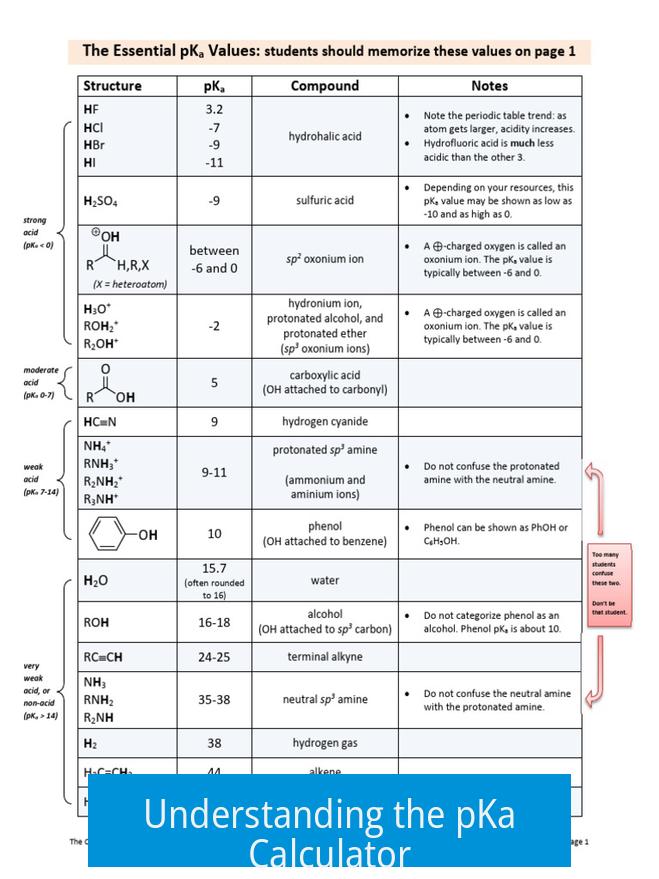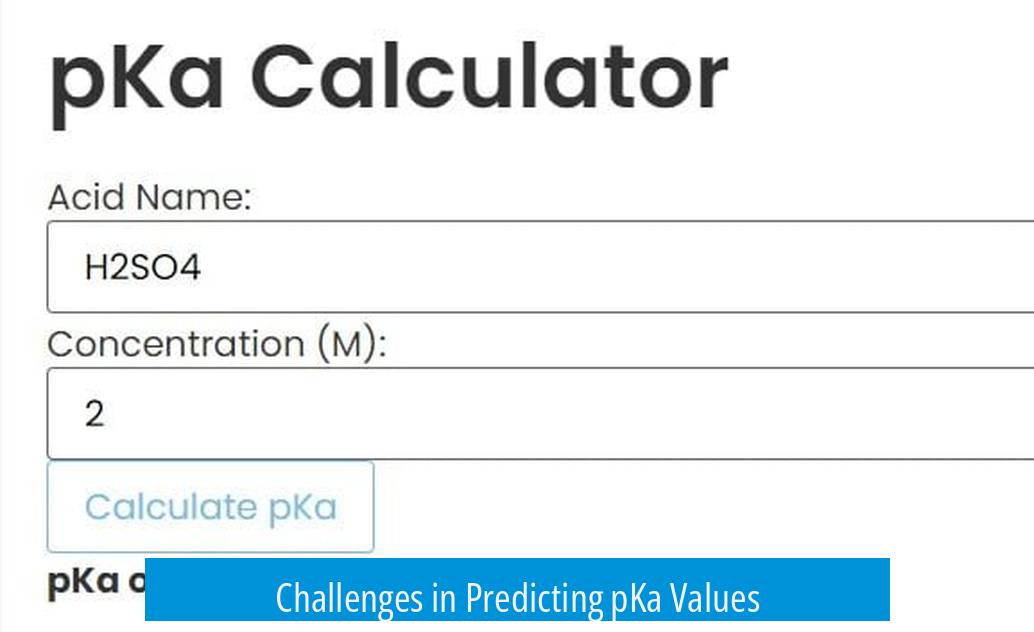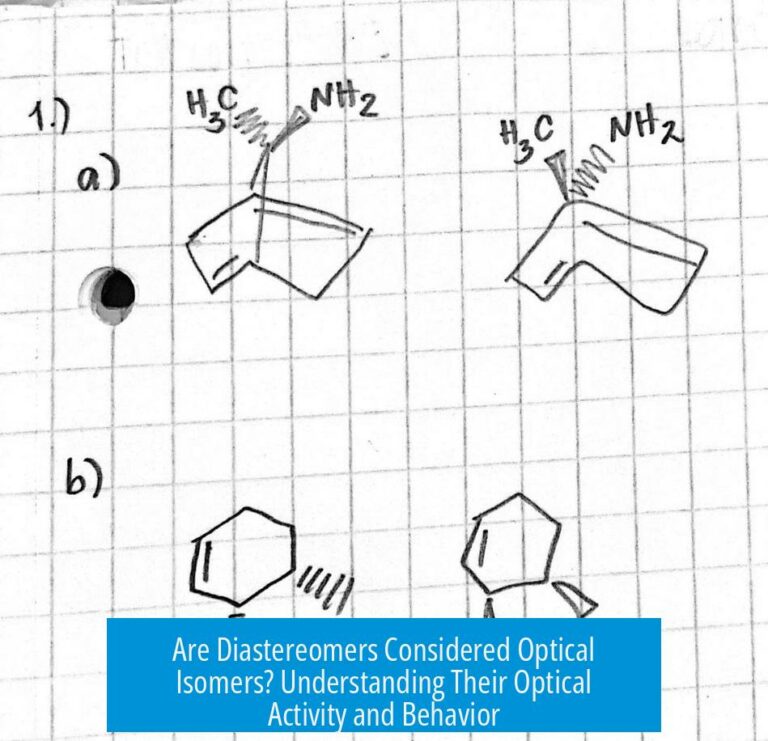Understanding the pKa Calculator

A pKa calculator estimates the acid dissociation constant (pKa) of molecules, offering insights into their acidity and ionization state. This value is crucial for predicting chemical behavior in various environments, impacting drug design, synthesis, and other chemical processes.
Challenges in Predicting pKa Values

Accurate pKa prediction remains difficult even with advanced software. Industries often rely on tabulated pKa values from trusted sources like David Ripin and David Evans. When experimental data lacks, computational models such as RDKit’s tool serve as estimators. They perform best when tested against molecules with similar functional groups and known pKa values.
However, these methods can fall short if the molecule’s structure is uncommon or the functional groups behave unusually. Predicting pKa values requires careful validation or experimental confirmation whenever possible.

Experimental Determination of pKa
Titration stands as a straightforward and reliable method to determine pKa experimentally. In this process, an acid or base is gradually added to the solution containing the compound, and changes in pH are recorded. The inflection points correspond to pKa values. This method is valuable when computational predictions are uncertain or unavailable.
Reference Sources for pKa Data
Many physical organic chemistry texts compile extensive tables of pKa values. Classics like Lowry and Richardson’s books serve as reference points, providing experimentally determined pKas across numerous functional groups. These resources are often the first stop for chemists seeking reliable acidity data.
Online pKa Calculators and Tools
- Chemicalize: Available at chemicalize.com, this paid service offers pKa calculators with a free trial. Limitations exist on molecular weight for free use.
- Allchemy pKa Calculator: This free online tool (pka.allchemy.net) provides quick pKa predictions for common functional groups.
These tools supplement traditional methods, providing convenience but requiring careful interpretation.
Key Takeaways
- pKa calculators estimate acid strength but often need validation due to prediction challenges.
- Tabulated values from respected sources remain crucial references.
- Experimental methods like titration provide definitive pKa measurements.
- Online tools offer convenient, though sometimes limited, prediction capabilities.
Mastering the PKA Calculator: Unlocking the Secrets of Acid-Base Chemistry
What exactly is a PKA calculator, and why does it matter so much? In a nutshell, a pKa calculator predicts the acid dissociation constant (pKa), which tells us how easily a compound donates a proton. This number is crucial for chemists, pharmacists, and industry professionals who need to understand molecule behavior in different environments.
But here’s the catch: predicting pKa isn’t a walk in the park. Even with cutting-edge software, it remains a scientific puzzle, like trying to crack the code of a chemical mystery novel.
The Tough Chemistry Behind pKa Prediction
Let’s get real. The chemical industry finds pKa prediction frustratingly difficult. Top-tier software struggles to nail accurate predictions consistently. Why? Because molecules can be notoriously tricky. Subtle changes in structure or environment can swing acidity dramatically, turning predictions into a guessing game.
Imagine you have a molecule, but no experimental pKa data on it. Your first instinct might be to run it through fancy software, right? Well, that’s not always reliable. The good news is there’s a practical shortcut: rely on tabulated values from respected sources like David Ripin and David Evans. Your classic pKa dictionaries, full of numbers carefully measured through years of research.
If your compound bears resemblance to a molecule with known pKa values, you’re in luck. You can use tools like RDKit’s pKa model, which leverages machine learning. This works well if the functional group in your molecule matches one already studied. If it doesn’t, then, well, you might be sailing in uncharted waters without a compass.
Why Not Just Measure It?
Tired of software headaches and guesswork? Here’s a blunt question: why not just perform a titration? Seriously. Titrations are experimental techniques that deliver direct, reliable pKa measurements. They don’t rely on theory or models but on real-world chemistry happening right in your flask.
Of course, titrations require lab equipment and time. But if accuracy is your goal, spending an afternoon titrating might beat hours wrestling with complex software or scouring literature for approximate values.
Books: The Old-School pKa Gold Mines
Remember those massive chemistry tomes with pages of numbers? Believe it or not, books on physical organic chemistry are treasure chests filled with pKa tables. Titles like Lowry and Richardson‘s works compile exhaustive lists that professionals have used for decades.
Need a dependable source? Dust off these trusted references. While not as flashy as an app, these tables provide a foundation of knowledge that can anchor your project.
Online Tools and Their Pros and Cons
The digital age brought us handy online pKa calculators, but they come with caveats.
- Chemicalize (chemicalize.com): A paid service with a free trial. Great for quick estimates but beware. There’s often a molecular weight cap on the free version, so large or complex molecules might be out of luck.
- Allchemy pKa Calculator (pka.allchemy.net): A user-friendly online tool offering accurate predictions. It’s worth trying to see if your molecule fits within its capabilities. It’s like the dependable buddy you call when you need quick chemical insights.
So, How Do You Pick the Right Approach?
Here’s the deal: no single method rules them all. Chances of hitting the bullseye increase if you combine approaches:
- Start by checking tabulated pKa values from trusted sources—it’s the closest thing to guaranteed accuracy.
- If that fails, try an online calculator like Allchemy to get a ballpark figure.
- Consider whether the molecule has similar analogues for which experimental data exist, and test the predictive model on those first.
- Finally, if precision is critical, do the good old titration experiment.
This layered method keeps you grounded in reality while leveraging modern tech and established data.
A Quick Real-World Example
Imagine a pharmaceutical chemist designing a new drug. They want to understand the drug’s behavior in blood, which hinges on the molecule’s pKa. They start by consulting Lowry and Richardson’s pKa tables—no exact match. Next, they input the molecule into the RDKit model to see if it predicts a meaningful pKa. The software suggests a value close to known drugs with similar groups, boosting confidence. Yet, to be absolutely sure, they run a titration in the lab, confirming predictions. This multi-pronged approach saves money, time, and, most importantly, safeguards patient safety.
Final Takeaway
Using a pKa calculator is an art and a science. It blends hard data, software’s predictive powers, experimental savvy, and age-old chemistry knowledge.
Next time you face pKa puzzles, remember to ask: What’s the goal here? Quick estimate? Reliable data? Experimental proof? Your toolkit should be ready with tabulated values, smart online tools, and good old-fashioned experiments.
And here’s a cheeky thought—maybe one day, AI-powered calculators will make pKa prediction as easy as ordering pizza. Until then, a bit of skepticism, a dash of expertise, and a splash of patience go a long way.
Ready to dive deeper? Visit Allchemy’s pKa Calculator or try Chemicalize to experiment yourself!
What makes pKa prediction difficult in the industry?
Even advanced software struggles with accurate pKa predictions. The complexity of molecular environments and interactions often leads to inconsistent results.
How can I estimate pKa if no experimental data is available?
Look for models like RDKit’s and test their accuracy on molecules with known pKas of similar functional groups. If results align, use it as an estimate; if not, predictions may be unreliable.
Are there reliable sources for tabulated pKa values?
Yes, tabulated values from researchers like David Ripin and David Evans are trusted. Physical organic chemistry books, such as those by Lowry and Richardson, also contain extensive pKa tables.
Should I consider experimental methods over calculators?
Performing a titration can provide direct experimental pKa values. This method is often more reliable than computational predictions when accuracy is crucial.
What are some recommended online pKa calculation tools?
- Chemicalize offers calculations with a free trial but may limit molecule size.
- Allchemy pKa Calculator is another available online resource for estimating pKa.





Leave a Comment